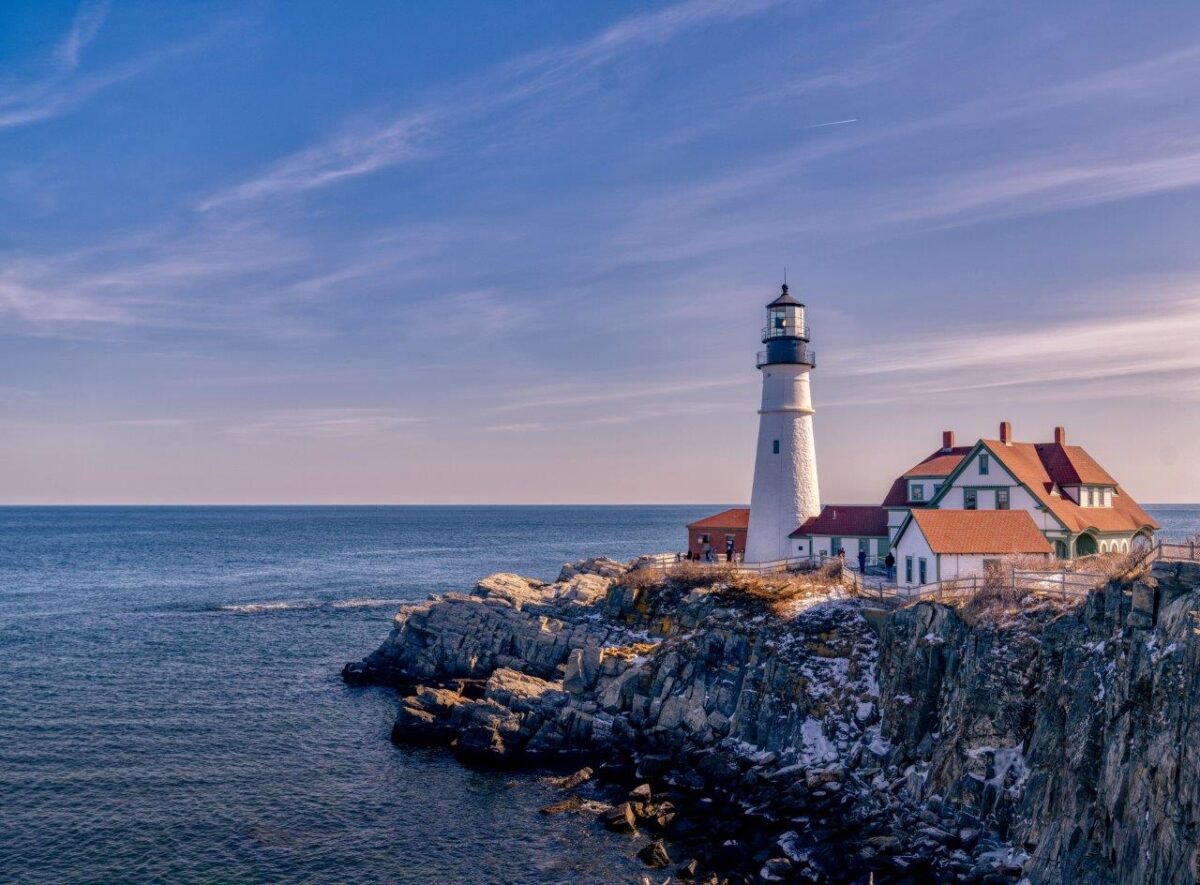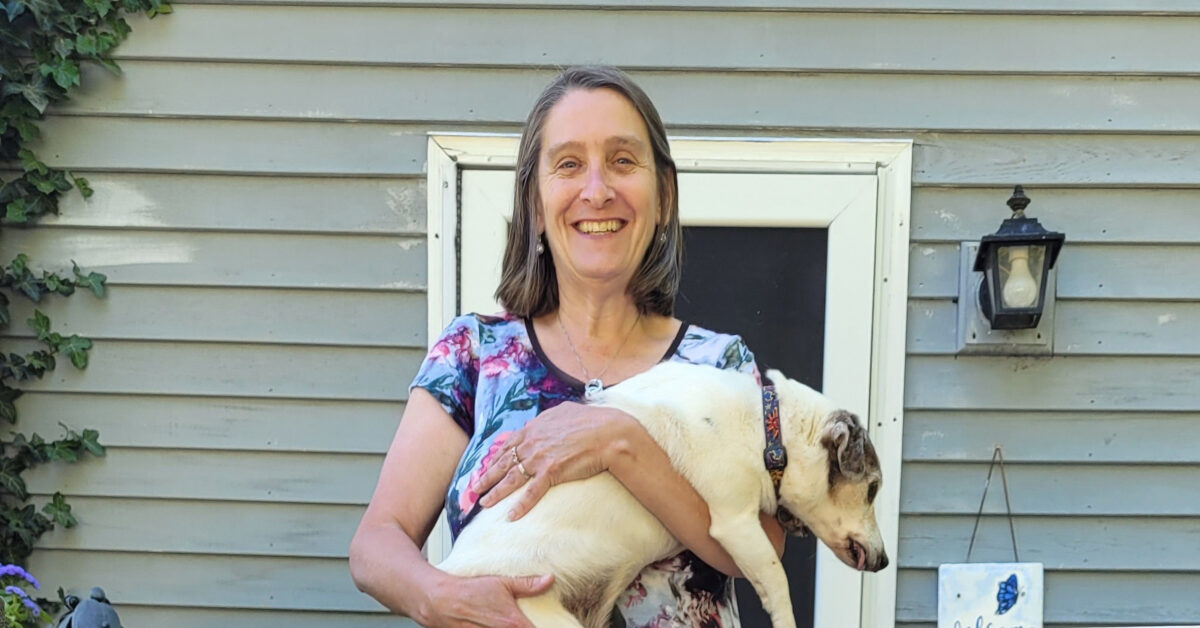Jim Burch, the founder of Discover Maine Magazine, is not a shy man. Raised in Bath, Maine, he realized early in life that he could talk with anyone and everyone. It was for that reason, perhaps, that he excelled in sales, which requires extraordinarily thick skin. In his 20s, in New York City, he trained himself to sell by phone, offering health food products to shops across the country.

When he came back to Maine in 1985, he worked for a company selling “reader ads”—small blocks of text sold to businesses that were then included in full-page newspaper ads pre-purchased by the ad company. These early experiences gave him the confidence to embark on a path that would eventually lead to the creation of “Maine’s Original History Magazine,” which has been going strong for 30 years.
Discover Maine publishes eight regional editions per year, from Aroostook County to York. It’s a free, glossy, 8×10-inch magazine that has about 60 pages per issue and is distributed to around 2,000 “drop points” in each region, with a print run of 15,000 copies.
The bottom halves of most pages contain ads purchased by businesses within each region. It’s the top half of each page that has made the magazine a much-loved and eagerly awaited periodical. Each edition is filled with the history of the towns of that region, going all the way back to colonial times.
I found the 2021 Southern & Coastal Maine Edition, published in October, a very timely edition, with what might be a comforting article about “Brunswick’s Great Snow of 1717” by Charles Francis. Comforting in the sense that we hope that the snows this year are nothing like the storms described in the article.
Francis stated that the town of Brunswick was hit by four snowstorms in a row, with the last one so large that Puritan leader Cotton Mather wrote, “As mighty a snow, as perhaps has been known in the memory of man, is at this time lying on the ground.” Francis added, “Immediately after the worst of the great storm, snow to a depth of five feet was reported as routine. Drifts of fifteen feet were common.”
Burch started the magazine in 1991 after experimenting with flyers filled with reader ads that he sold to businesses. He knew that he needed to offer something more to the people who would read his publication, so he decided to include articles about the history of Maine.
He bootstrapped the business, selling the ads himself, and assembling the magazine on his living room floor. “It was a lot of work,” he told me.
He found two freelancers to write the stories and slowly expanded. Now, after 30 years, he has a staff of five and an office in Portland’s Old Port managed by his son Dennis. The magazine is a success, both financially and as a product of value to his readers. Prior to the Covid outbreak, his revenues were over half a million dollars. They’ve decreased a bit because of the economic impact of the last two years, but it’s especially impressive that his revenues are still high considering the downgrades that many print publications have had to make in the last two decades.
The revenue is a good thing, but for Burch, the most important aspect of his business is that the magazine has proven to be a lasting inspiration to its hundreds of thousands of readers in Maine and a special set of about a hundred subscribers across the country. One out-of-state subscriber wrote:
“Maine is a love affair you never get over. Thank you for publishing a terrific magazine. P.S. The magazine I have went from Maine to California to Florida to Connecticut.”
I asked Jim what he thought was the core value of the magazine, and he replied, “Home-town pride. Maine pride.” He added:
“Maine people love their state so much, and that is what drove the magazine, and me, to create it. Because I knew that Maine people have such pride in our state. That’s what kept my vision strong. I love Maine. I think most Maine people do too. The more north you go, the more love people have for our state.”
Burch isn’t speculating about the attitudes of Mainers. He’s traveled all over Maine and has been on almost every road in the state over the decades, developing a huge list of distribution sites or “drop points.” His market research was hands-on.
“The way we know how extremely popular the magazine is, is when we’re out distributing it. We’re going into the stores and the restaurants and the diners and barbershops and places like that. And as you’re walking in with a pile of magazines that you’re going to drop off, people are saying, ‘Oh, can I have one of those? I love that magazine.’ They collect them. They don’t throw it away. It’s history, so it’s timeless.
“If you grew up in Mars Hill, and you’re eating at the Mars Hill Diner, and you see copies of an Aroostook County edition of the magazine, with stories about Presque Isle, Caribou, Mars Hill, Fort Fairfield, you want that. And you keep it. People actually collect our magazines. I was at a flea market north of Searsport, and I’m looking at a booth, and he’s selling the magazines. It’s a free magazine, and they’re charging five dollars for it, and they’re selling them. And another guy is selling our magazines for 10 dollars online. And it says ‘Free’ right on the magazine.”
Jim’s business plan when he started was bold. In the beginning, when he distributed the magazine, he would visit the advertisers because, for the first 20 years, they didn’t prepay for their ads. The company took a risk and allowed advertisers to pay when the magazine was distributed. Now, around 70% of the advertisers prepay. Ninety percent of them are repeat customers, although the staff constantly push for new advertisers.
“I love calling new businesses,” Jim said. “Three years ago, we were doing the Aroostook County edition, and I just wanted to get back on the phone and see if I still had the magic. Over the course of six weeks, I sold 90-plus ads. I couldn’t believe it, and I had so much fun.”
Of course, it helped that almost all of the businesses knew about the magazine.
The magazine has become a Maine institution. At the 2021 annual Maine Policy Institute fundraiser that honored L. L. Bean’s granddaughter Linda Bean for her charitable work in the state, Bean insisted that Jim sit at the head table. In her remarks, she pointed to him and thanked “Jimmy Burch” for his great work with Discover Maine Magazine.
Jim started out as a salesman with grit, a good Yankee salesman who could talk to anyone. He still can, in fact, but he’s most proud of how the magazine’s historical content has been valued by the people of Maine.
“I feel like I’m contributing to the heritage of our state,” he said. “That’s my biggest joy, that when I die, in my obituary maybe, they’ll say something about that.”






